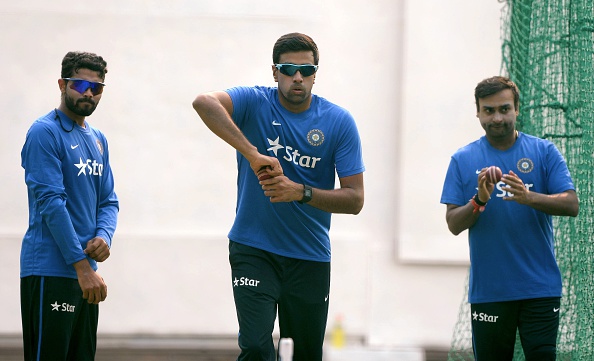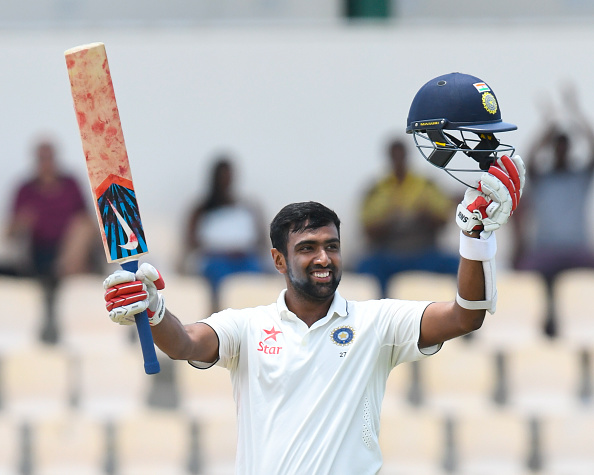
The pros and cons of four/five specialist bowler combinations for India
In the game of cricket, and indeed in any sport, every captain has his own way of managing things. There is not, and can never be, a set template that every captain has to follow and the ideas also need to be flexible in their implementation and not written in stone.
Depending upon the match situation, pitch, weather, opposition, the tactics employed by captains must change and suit the needs of the team in the best possible manner.
One strategy that has been much talked about in the recent past has been Indian test captain Virat Kohli’s five bowler theory.
The 5 bowlers theory?
What does this mean: Playing 5 specialist batsmen to bat at number 1 to 5 in the team, a wicket-keeper, and 5 “specialist” bowlers to complete the eleven. This theory was much talked about and team India under Virat Kohli usually fields an XI with the 5-1-5 combination.
This theory certainly has its merits. Playing 5 specialist bowlers means you have more firepower in the bowling department to pick opposition wickets and thus, win Test matches. Also, the bowlers will be better rested in between spells and hence can produce more power in a spell each time they are called up by the captain.
But with the obvious advantages of playing 5 specialist bowlers, the question that comes to mind is:
“Should a captain then not always want to go with this plan, in every single test that his team plays, and abandon the conventional concept of playing just 4 regular bowlers permanently?”
The answer is: No.
For a captain to play 5 bowlers, he must be sure of 2 things:
#1 If it is a really flat pitch and hence will need all the bowling resources to force a result.
#2 At least 1 or 2 of the 5 specialist bowlers are decent batsmen, so that he is not running the risk of playing with a long tail, which means almost no power in the batting order after the No. 6 batsman.
Once the captain is certain about these 2 aspects, he can field 5 specialist bowlers in the playing eleven.
In India’s case, this theory works fine on most days. The reason is that among the bowlers that Virat Kohli would be looking to play in the line-up, 3 or at times even 4 of the 5 are more than capable batsmen.
In playing 5 bowlers, we can mainly have 2 scenarios:
# 3 spinners and 2 pacers
# 2 spinners and 3 pacers
3 spinners and 2 pacers
On slow and turning pitches that would offer some assistance to the spinners, the 5 bowlers, as of now, that Kohli might choose to play can be – Ravichandran Ashwin, Ravindra Jadeja, Amit Mishra, Bhuvneshwar Kumar and Mohammad Shami.
Now, from these 5, the fact that Ashwin and Jadeja can be considered as genuine all-rounders at the Test level needs no great explanation. 4 Test tons for Ashwin and, 3 first class triple hundreds with an average in excess of 45 for Jadeja clearly tells us that these two can contribute with the bat.
Amit Mishra has also proved to be a handy batsman in the recent past, with a half century in the West Indies and one in the Duleep Trophy. Who can forget his brilliant 84 in England, where he had a long partnership with Sachin Tendulkar? He by no means is a bad no. 9 for any Test team.
Bhuvneshwar Kumar is handy with the bat, too; he scored 3 fifties in England, against the likes of Broad and Anderson which speaks volumes about his technique and temperament as a test batsman.
This tells us that in most conditions, playing 5 bowlers with a 3 spinners-2 pacers combination isn’t a bad idea for team India by any means, as the batting line-up goes till no. 10; even Shami, the no.11, has a Test fifty.
2 spinners and 3 pacers
If the combination changes to 3 spinners-2 pacers, the team combination is still balanced as it will probably mean Mishra making way for Ishant Sharma or Umesh Yadav and Bhuvneshwar moving up to no.9.
This will still ensure a long enough batting line-up.
The conventional 4 bowlers theory
Having seen the merits of a 5 specialist bowlers theory for India, let’s see the case when there isn’t a lot of merit in this theory.
As in the case of opting for a 5 bowler theory, there are 2 reasons behind not opting for it:
#1 If there is a lot of help for the bowlers from the pitch, hence you need to bolster your batting to counter it.
#2 There isn’t a need to play 5 bowlers to get the opposition out twice; 4 will be enough for the job as the pitch is conducive for bowling.
As seen in the ongoing India-NZ series, in the first and second Tests, India opted for a 4 bowler theory as the management felt that the pitches were tough to bat on and they would need the cushion of a 6th specialist batsman to get as many runs as possible.
Rohit Sharma played as the 6th batsman in both Tests, and the selection reaped rich dividends as he made over a 100 runs in the Kanpur Test, and in the 2nd Test at Eden Gardens, played a match-turning knock of 82 in the 2nd innings, after coming in to bat at no.6 with the team struggling at 43 for 4.
In this long home season for India which will include 13 Test matches, we will get to see the team management play 5 bowlers at some point of time, as there are bound to be flatter – or as we say in cricketing terms, tired pitches, towards the end of the season.
On such “tired” pitches, the bowlers usually don’t get a lot of help as the pitch becomes very slow and gives the batsmen a lot of time to adjust their shots. It’s in such cases that a team opts to play more bowlers so that they can offer more variety in the bowling attack and give their best shot at getting their opponent out.
In the Test series that India played in the West Indies, the pitches were very flat. On that tour, team India fielded 5 specialist bowlers and Ravichandran Ashwin batted at no. 6, in the first 3 Tests of the 4 Test series.
He responded beautifully and made two hundreds in the series.
To encapsulate it all, let’s see the pros and cons of both theories below:
The 5 specialist bowlers theory | |
Pros | Cons |
More variety in the bowling attack | If there are no all-rounders, you run the risk of having a longer tail |
Lesser workload for bowlers as it is shared. | More pressure on top-order batsmen |
More rest for bowlers between spells | A top-order collapse in either innings might prove hard to recover from, than if the team had a specialist batsman at 6 |
As we can see, there is an equal weightage of pros and cons of playing 5 specialist bowlers in a test eleven.
The 4 specialist bowlers theory | |
Pros | Cons |
A longer batting line-up with specialists till no. 6 | More workload on the 4 bowlers |
Lesser pressure on top-order batsmen as there is the cushion of having a specialist batsman at 6 | Lesser rest for bowlers between spells |
| Lesser variety in the bowling attack |
Again, favourable points for the theory and some unfavorable ones too.
Overall, it’s the nature of the wicket, opposition and the need of the hour that should always decide whether a team goes into a match with 5 bowlers or 4, rather than having a fixed plan and being reluctant to change it.
One would hope this is precisely what Kohli and co. are thinking as team India goes into this long home Test season.


